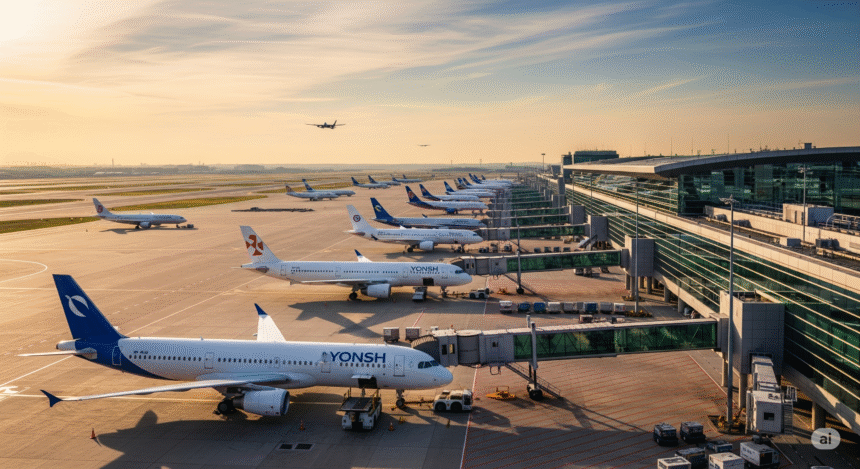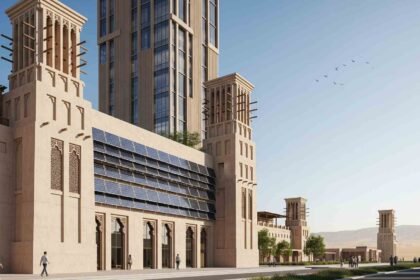In a major growth to its aviation ambitions under Vision 2030, Saudi Arabia’s Eastern Province Governor, Prince Saud bin Nayef bin Abdulaziz, has unveiled an extensive master plan for King Fahd International Airport in Dammam, along with complementary plans for Al‑Ahsa and Qaisumah airports. State media and infrastructure publications reported that these initiatives signify a dramatic transformation of airport infrastructure in the Eastern Province.
- Strategic Vision and Investment Impetus
- Transforming King Fahd International Airport
- Regional Reach: Al‑Ahsa and Qaisumah Airports
- Passenger Experience and Digital Innovation
- Aligned with Vision 2030: Logistics and Connectivity
- Economic and Social Implications
- Looking Ahead: What Comes Next
- Infrastructure, Innovation, and Integration
Strategic Vision and Investment Impetus
Governor Prince Saud announced the launch of the new corporate identity for Dammam Airports Company and inaugurated an electronic gate system aimed at improving passenger processing. He also rolled out a SAR 1.6 billion integrated development package involving 77 projects designed to modernize airport operations and facilities.
This infrastructure push is part of a broader strategic effort aligning with Saudi Arabia’s National Transport and Logistics Strategy, which seeks to establish the Kingdom as a global aviation and logistics hub by 2030.
Transforming King Fahd International Airport
King Fahd International Airport, the busiest in the Eastern Province since opening in 1999, currently handles around 10.9 million passengers annually and over 99,500 aircraft movements, according to 2023 data. The new master plan aims to more than double annual passenger capacity and vastly increase cargo and aircraft handling capabilities.
By 2030, the airport expects to serve over 19.3 million passengers annually, with ambitions to eventually accommodate up to 32 million. Cargo capacity is slated to exceed 600,000 tonnes per year, representing more than a tenfold increase.
A key feature is dramatically raising operational efficiency with 77 aircraft movements per hour, a record expansion in the airport’s history.
The project also includes a comprehensive upgrade of general aviation support facilities and airport infrastructure to reach international standards.
Regional Reach: Al‑Ahsa and Qaisumah Airports
Alongside KFIA’s transformation, Prince Saud introduced master plans for Al‑Ahsa International Airport and Qaisumah International Airport. Though in earlier stages of development, both facilities are integral to the Eastern Province’s regional air service expansion. Their upgrading complements KFIA’s hub capabilities and supports decentralized access to air travel and cargo logistics.
Passenger Experience and Digital Innovation
Modern airport amenities are central to the strategy. The introduction of electronic gates is designed to speed up passenger processing, reduce wait times, and enhance safety and convenience. The broader development package includes terminal expansions, improved boarding systems, enhanced baggage handling, and revamped retail, dining, and passenger services. With air passenger traffic having increased by 35 percent by the end of 2024 compared to 2022, the upgrades are viewed as timely, keeping pace with surging demand while preparing for long-term growth.
Aligned with Vision 2030: Logistics and Connectivity
The master plan is a clear expression of Saudi Arabia’s Vision 2030 goals to diversify the economy, boost non-oil sectors, and convert the Kingdom into a global logistics and transport hub. Integrating airport expansion with digital technologies, eco-friendly solutions, and new airlines promises to significantly elevate air travel, trade, tourism, and investment.
A linked initiative is the launch of a new low-cost airline based in Dammam by an Air Arabia-led consortium. This airline, scheduled to begin operations in 2026, plans to operate 45 aircraft serving 24 domestic and 57 international destinations, with the capacity to carry up to 10 million passengers annually. It is expected to generate more than 2,400 jobs while stimulating regional connectivity.
Economic and Social Implications
The SAR 1.6 billion investment in 77 development projects, including terminals, technologies, and cargo, will create a ripple effect supporting construction, service, tourism, and trade industries. The new airline will inject competition and pricing dynamism into the aviation sector, expanding travel options for consumers and businesses.
As cargo capacity rises, the Eastern Province stands to strengthen its position in regional and international supply chains. KFIA’s upgraded freight handling can facilitate higher-value exports, perishables, and industrial goods, reducing delays and enhancing cost-effectiveness for businesses.
Looking Ahead: What Comes Next
Over the next five years, Saudi aviation authorities, Dammam Airports Company, and private sector partners will work to complete the 77 prioritized projects. This will involve expanding terminal space, runways, passenger amenities, cargo facilities, and airside infrastructure.
A simultaneous push to integrate digital technologies like electronic gates and attract new airlines will ensure that demand growth is matched by passenger experience improvements and commercial viability. The new low-cost carrier will, in turn, increase traffic at Dammam and regional airports, accelerating return on investment.
If executed smoothly, by 2030, Dammam could transform into a premier aviation and logistics hub serving millions of travelers and supporting cargo trade worth hundreds of thousands of tonnes annually. This aligns with Saudi Arabia’s vision of building a modern transportation ecosystem that spans air, rail, road, and sea.
Infrastructure, Innovation, and Integration
Saudi Arabia’s unveiling of the master plans for King Fahd, Al‑Ahsa, and Qaisumah airports marks a turning point in the Kingdom’s aviation trajectory. With bold targets doubling passenger capacity to over 19 million by 2030, increasing cargo tenfold, launching a low-cost carrier, and deploying digital infrastructure, the Eastern Province is on track to become a regional cornerstone for connectivity and economic growth.
These initiatives reflect the ambitious transformation envisioned under Vision 2030: diversifying the economy away from oil, forging global logistical ties, and building a vibrant society supported by modern infrastructure and technology.







